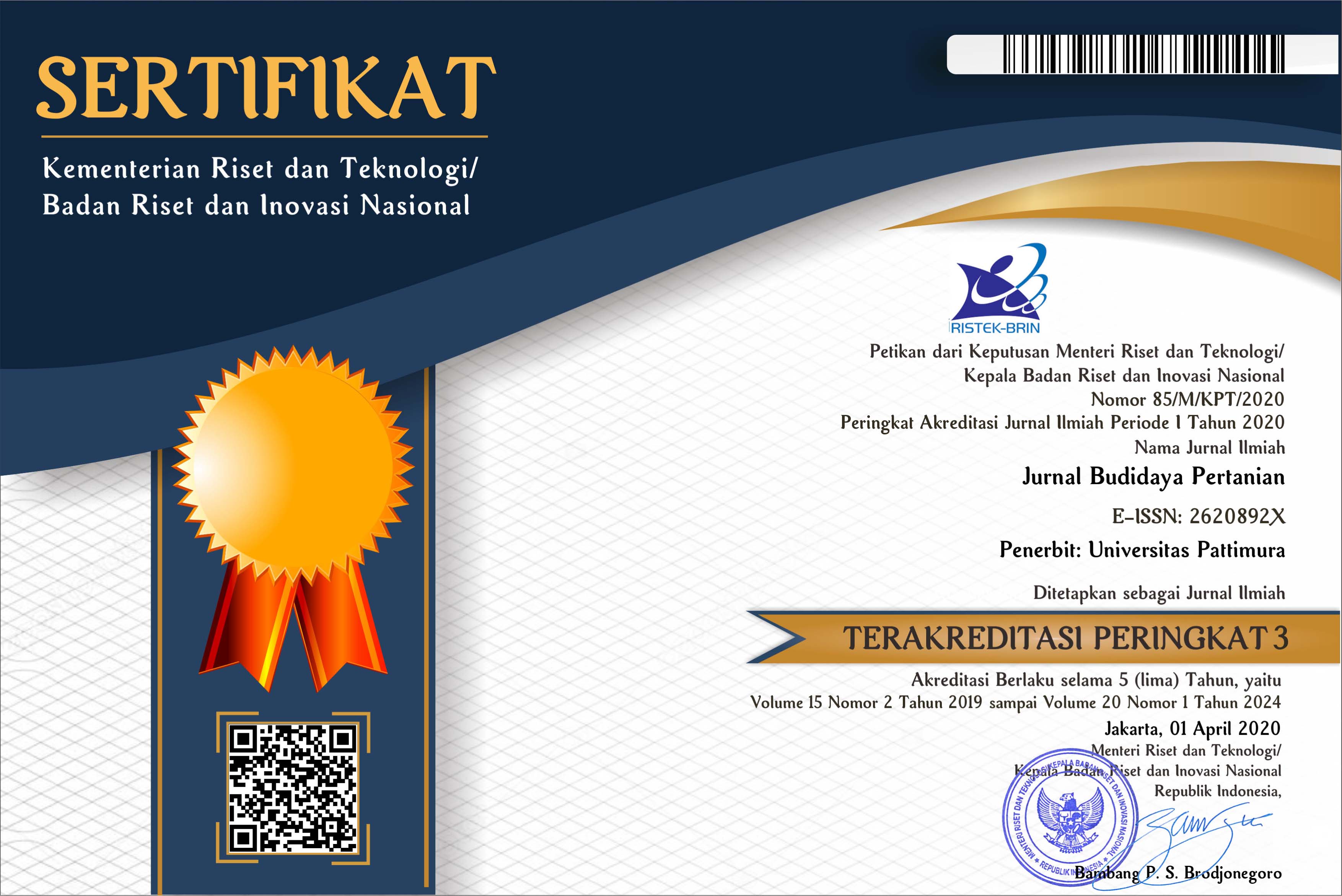PENGUKURAN EFISIENSI AGROINDUSTRI PANGAN LOKAL ENBAL DENGAN PENDEKATAN DATA ENVELOPMENT ANALYSIS
Abstract
The current research aimed to analyze the relative efficiency level of enbal (sago starch) agro-industries. The relative efficiency analysis on 32 DMUs of enbal agro-industries showed that 40,63% of the industries were efficient and 59.38% were inefficient. Every efficient DMU became the reference for the inefficient DMUs based on the suggested quality. Each DMU of the enbal agro-industries has not reached a good efficiency level, which was indicated by the average relative efficiency scale of 0.886. This was a relatively low value, and improvements on the use of production input were needed. The analysis result on the DMUs of the enbal agro-industries which were on constant return to scale position were 40,62%. This showed that enbal agro-industries actors have applied production input efficiently, for the production increase was equal to the use of input. In other words, the use of input was more proportional. The DMUs of enbal agro-industries which were on decreasing return to scale position were 15,63%. This showed that the use of production input had been unsuitable so that the output decreases and the production cost increased. Meanwhile, the DMUs that were on increasing return to scale position were 43,75%. This showed that the industry actors who used certain production input would create efficient DMUs. On the other hand, the input excess would possibly decrease the output. As a result, the industry actors should be concerned about the use of production input in order to establish business efficiency.
Downloads
References
Al-Delaimi, K.S.K. and A.H.B. Al-Ani. 2006. Using data envelopment analysis to measure cost efficiency with an application on Islamic Banks. Scientific Journal of Administrative Development 4: 134-156.
Augustyn, G.H., F.J. Polnaya, dan A. Parinusa. 2007. Karakterisasi beberapa sifat pati ubi kayu (Manihot esculenta, Crantz). Buletin Penelitian BIAM 3: 35-39.
Austin, J.E. 1992. Agroindustrial Project Analysis. Critical Design Factors. EDI Series in Economic Development. 2nd edition. The Johns Hopkins University Press. USA.
Charnes, A., W.W. Cooper, and E. Rhodes. 1978. Measuring the efficiency of decision making units. European Journal of Operational Research 2: 429–444.
Coelli, T. 1996. A guide to DEAP Version 2.1: A Data Envelopment Analysis (Computer) Program, CEPA Working Paper 96/08, University of New England, Australia.
Fauzi, A. dan S. Anna. 2005. Pemodelan Sumber Daya Perikanan dan Kelautan untuk Analisis Kebijakan. Jakarta: PT Gramedia Pustaka Utama. 343 hlm.
Hadad, M.D., W. Santoso, E. Mardanugrah, and D. Ilyas. 2003. Analisis Efisiensi Industri Perbankan Indonesia: Penggunaan Metode Non Parametrik Data Envelopment Analysis (DEA). Research Paper No. 7, Bank Indonesia.
Handfield, R.B. and E.L. Nichols. 1999. Introduction to Supply Chain Management. Prentice Hall Inc.
Hsu, S. 1997. The Agroindustry: A neglected aspect of the location theory of manufacturing. Journal of Regional Science 37: 259-274.
Kirkley, J.E., D. Squires, F.A. Mohammad, and H.O. Ishak. 2003. Capacity and offshore fisheries development: The Malaysian purse seine fishery. In: Pascoe, S and D. Greboval (Eds.). Measuring capacity in fisheries. FAO Fisherier Technical Paper 445: 193-208.
Kumbhaker, S.C. and C.A.K. Lovell. 2000. Stochastic Frontier Analysis. Cambridge, UK: Cambridge University Press.
Lukmito, H. 1997. Strategi Industri Pangan Menghadapi Pasar Global. Majalah Pangan No. 33, Vol. IX. Jakarta.
Mckeller, M.M.M. and R.C. Smardon. 2012. The potential of small-scale agro-industry as a sustainable livelihood strategy in a Caribbean Archipelago Province of Colombia. Journal of Sustainable Development 5: 16-33.
Mardani, M. and M. Salarpour. 2015. Measuring technical efficiency of potato production in Iran using robust data envelopment analysis. Information Processing in Agriculture 2: 6–14.
Oyewole, O.B. and B. Philip. 2006. Agro-food chain and sustainable livelihood: a case study of cassava marketing in Nigeria. Agro–food Chains and Networks for development. Reuben B. and Slingerland (Eds). Springer, Netherlands 14: 107-115.
Polnaya, F.J., R. Breemer, G.H. Augustyn, dan H.C.D. Tuhumury. 2015. Karakteristik sifat-sifat fisiko-kimia pati ubi jalar, ubi kayu, keladi dan sagu. Agrinimal 5: 37-42.
Prihandana, R. dan R. Hendroko. 2007. Energi Hijau. Jakarta: Penebar Swadaya.
Purwanto, D. Manongga, and M.A.I. Pakereng. 2014. Efficiency of small and medium-sized Tofu Enterprises (SME) in Salatiga using Data Envelopment Analysis (DEA). International Journal of Computer Applications 91: 44-50.
Rustiadi, E., S. Saefulhakim, dan D.R. Panuju. 2009. Perencanaan dan Pengembangan Wilayah. Jakarta: Yayasan Obor Indonesia.
Timisela, N.R., E.D. Leatemia, F.J. Polnaya, dan R. Breemer. 2017. Supply chain management of agro industry of cassava. Journal of Applied Management 15: 135-145.
Zhu, J. 2002. Quantitative Models for Performance Evaluation and Benchmarking Data Envelopment Analysis with Spreadsheets and DEA Excel Solver. Massachusetts: Kluwer Academic Publisher.

 Accreditation is valid for 5 years, starting from Volume 15 Issues 2 December 2019 up to Volume 20 Issue 1 June 2024.
Accreditation is valid for 5 years, starting from Volume 15 Issues 2 December 2019 up to Volume 20 Issue 1 June 2024.






